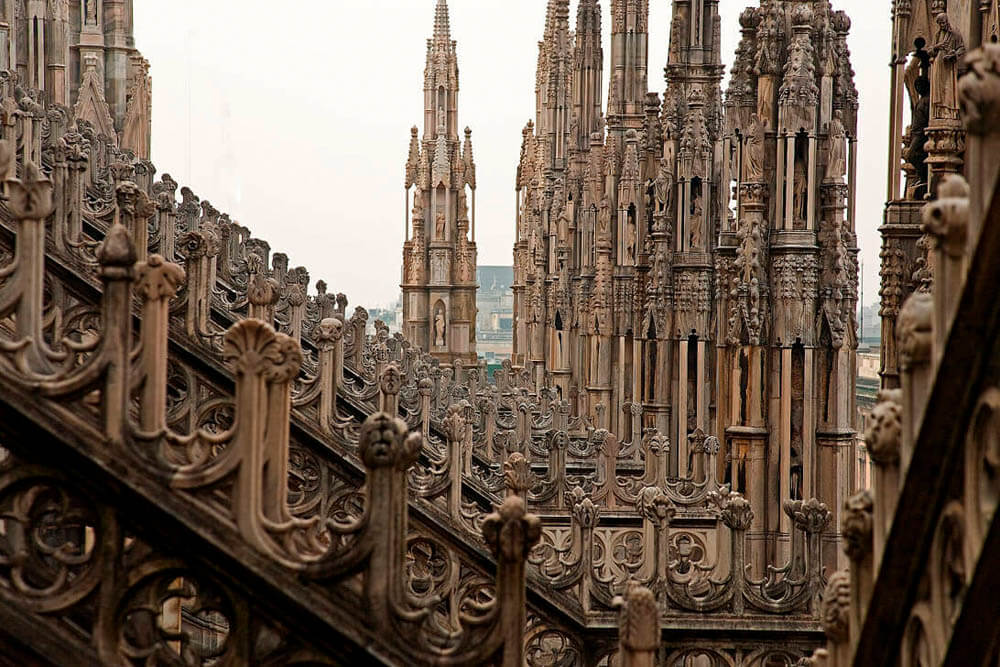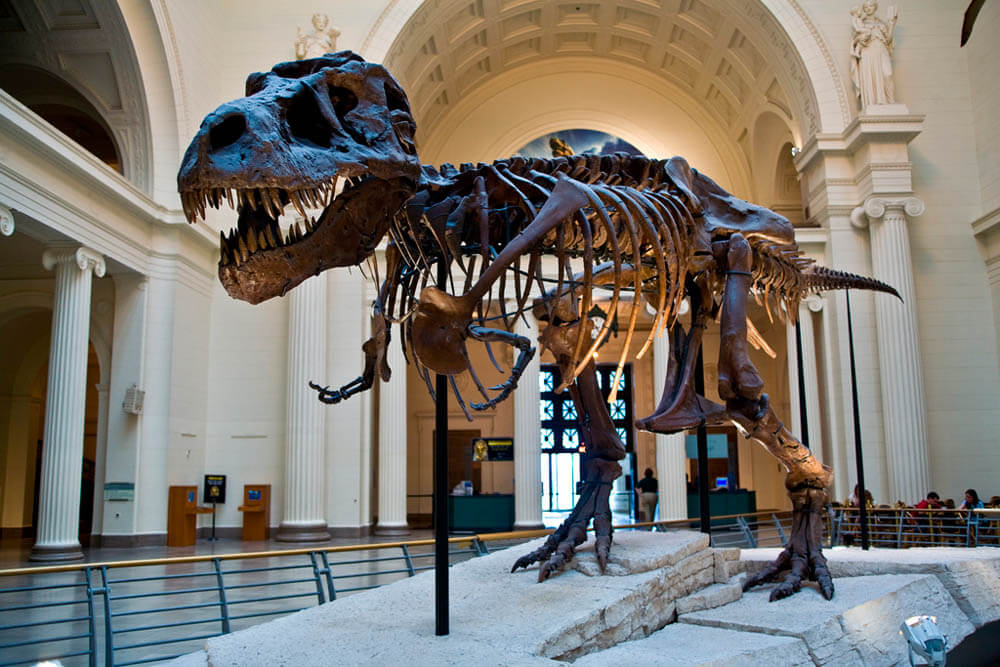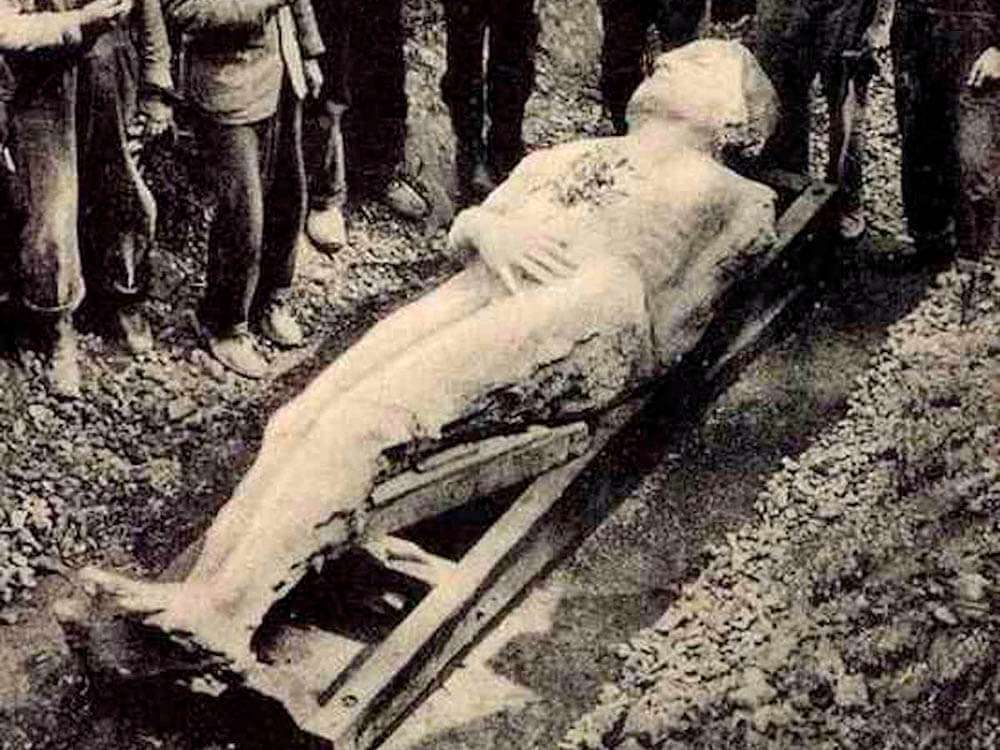One of the characteristic features of ancient Khmer art, which distinguishes it from the art of India, originates in the folk architecture of Cambodia – in the forms of wooden pile structures with ridge roofs covered with straw or reed. This type of buildings goes back to remote prehistoric times and is very different from the buildings of the Indian Neolithic era.
It was folk art, which found an amazing expression in Khmer bas-reliefs of Angkor Thom, that gave rise to some of the most interesting forms of Angkorian architecture.
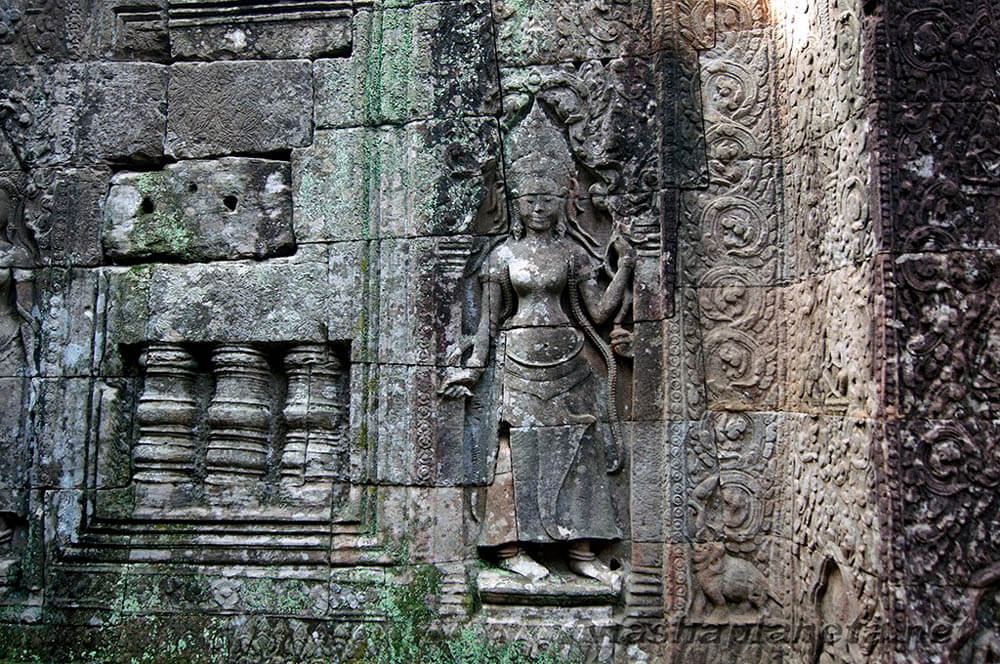
The city has five gates, one for each cardinal point, as well as a victory gate that leads to the area of the Royal Palace. In addition, every door here is crowned with four giant faces.
Cobbled all along by huge sandstone slabs, the roads approached the gates of Angkor Thom over dykes 15 meters wide. Everything here is framed by balustrades in the form of nagas (snakes).
Also on both sides, there are stone sculptures of 54 spirits, which resemble stone warriors, great and formidable, and the parapets are shaped as 9-headed snakes. It seems that these 54 spirits are trying to keep the nagas, as if, not giving them the opportunity to harm anyone.
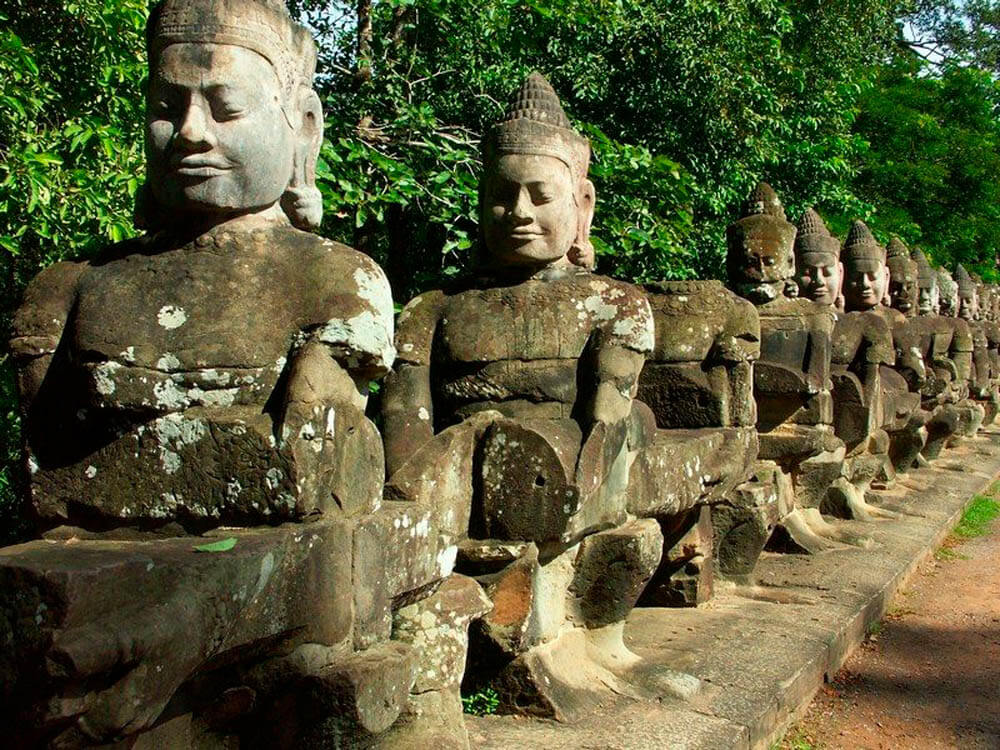
Many experts argue that these sculptural groups illustrate a certain Buddhist myth. It tells us that the demons are always on the right side, and the gods are on the left. The composition has a fairly large scale, so its meaning is read very hard. In fact, each line of gods or demons represents only half the scene, and to see its second part you need to go to the opposite gate. Thus, 54 gods of the right balustrade of the northern gate correspond to 54 demons of the left balustrade of the southern gate.
They pull the Vasuki snake, who has wrapped his body around the whorl of Bayon temple. By the way, Khmer architects were not even embarrassed by the fact that Angkor Wat statues stay with their backs to the city. To get the drink of the gods which would make them immortal, they simply had to face the entrance gate. Double balustrades depict a rainbow, which, according to Indian beliefs, is a passage from the world of people into the world of gods – a kind of a bridge between the earth and heaven.
Unfortunately, up to date, many statues of the five alleys of giants have been lost. However, some sculptures in front of the Victory Gate, the southern and northern gates managed to be restored. It may seem that there are a few pattern postures here, however, if you look at them closely, their faces are very different.
On the territory of Angkor Wat temple, apart from Bayon, there are several larger temples, as well as stone terraces – the Terrace of the Elephants and the Terrace of the Leper King.
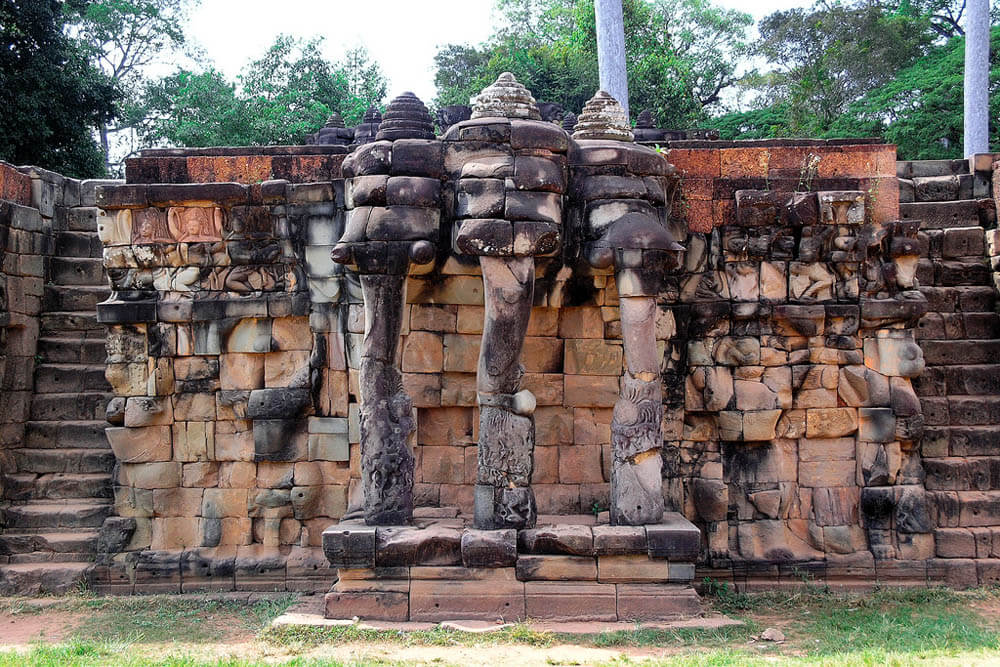
Three pseudo-arched towers are almost in their original form, but the decorative sculptural ornaments, Angkor Wat carvings, bas relief, and high relief sculptures have suffered badly, therefore, some details on them can be seen with great difficulty. Ornamentation on the northern gate is the only one that was left well-preserved, as well as the one on the west side of the eastern gate, which is also called the gates of the Dead.
The length of the gate along the facade is approximately 16 meters, and the height to the top of the central tower is about 23 meters. It is worth noting that all the Gopura Gates have lost their porticoes, so the height does not match the original, but it can only be determined approximately. Most likely, the architects counted it according to the rule of the golden section, which means that the height was about 5.8 meters.
The sculptural decoration of all the gates repeats the motif of the ornamentation of the Bayon tower. Angkor Wat faces depict the faces of Avalokitesvara, which look into the four directions of the world. The main tower has two faces, and the side buildings have one each. The corners, which are formed by the intersection of the main axial lines of the gate, are decorated with stunning statues of the three-headed elephant Airavata. His trunks form columns that support powerful heads.
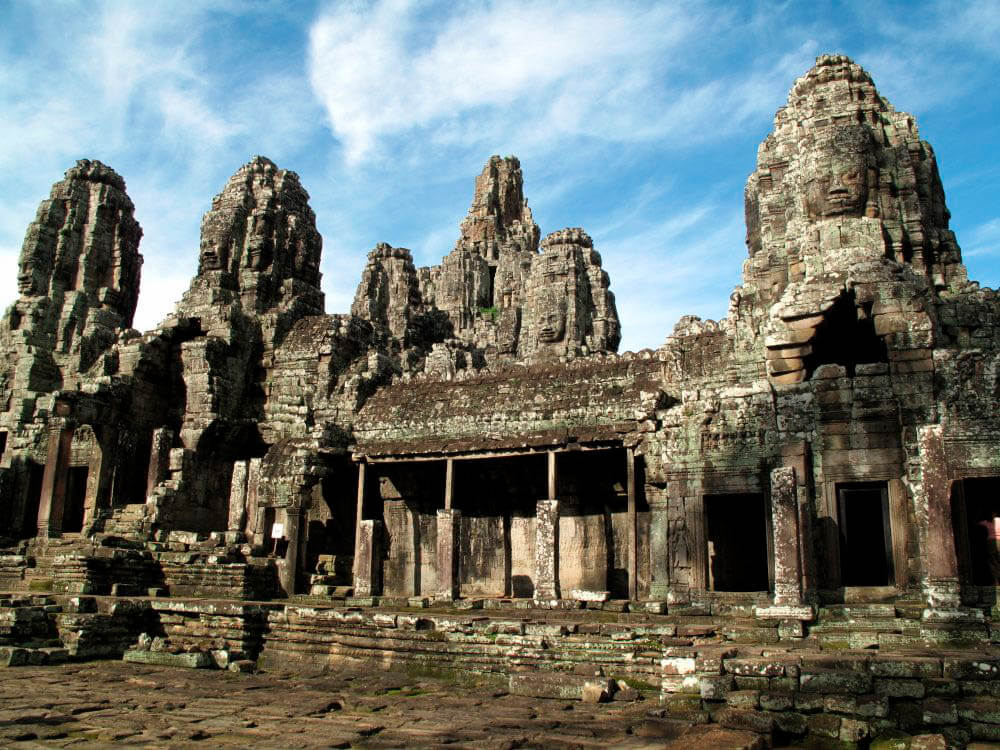
The temple of Angkor Wat is built as a model of the Universe, which can be clearly seen if you look at Angkor Wat from above. Here, Bayon symbolizes Mount Meru (the sacred mountain in Hindu mythology), channels symbolize the ocean and the surrounding world, and walls stand for the limits of this world.
